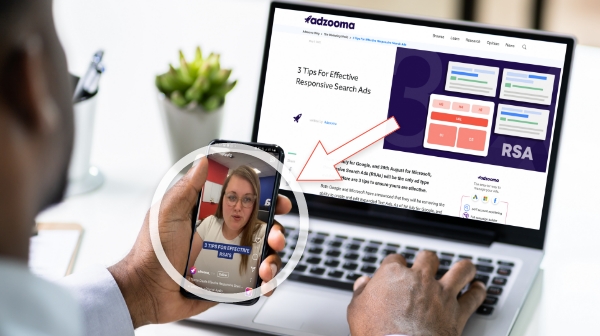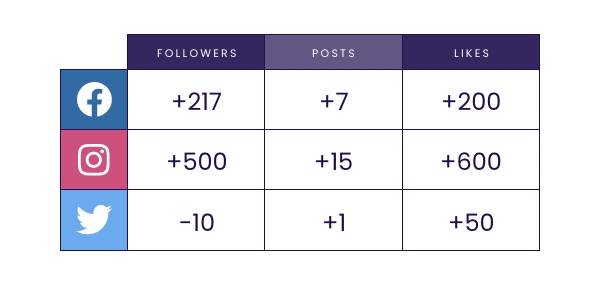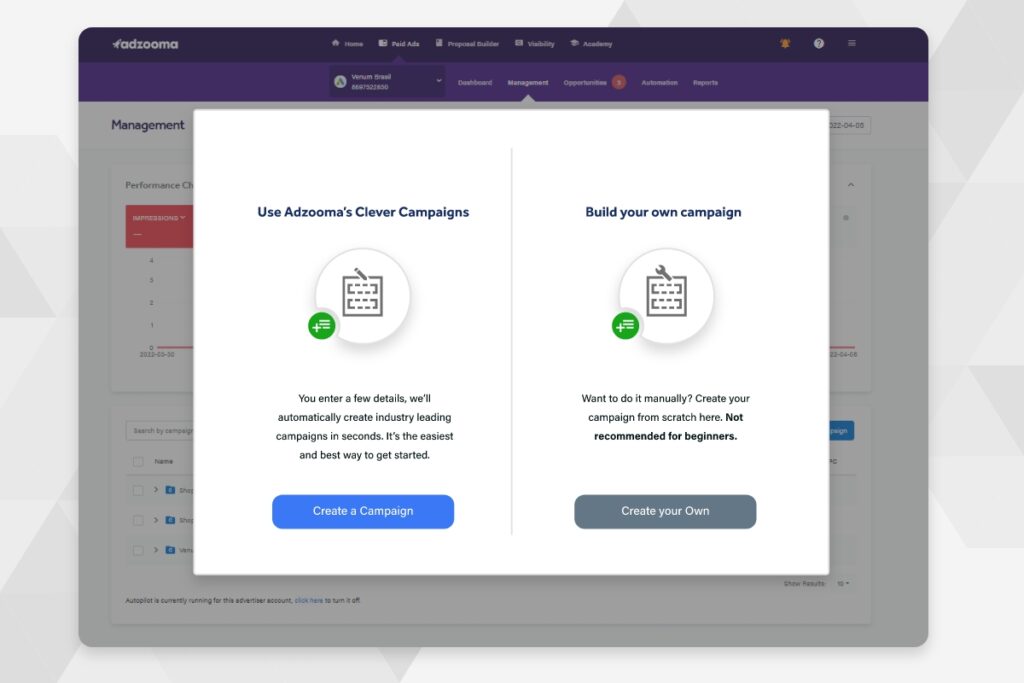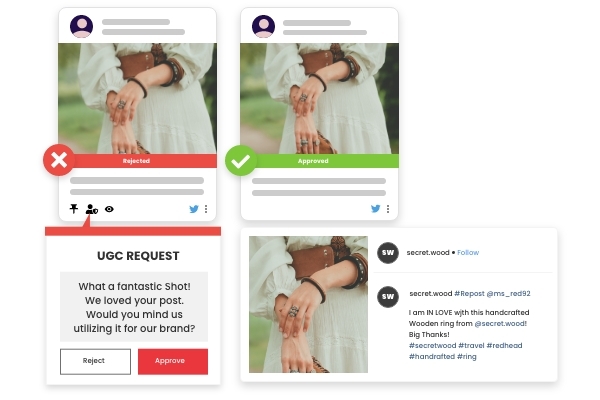A solid online presence is the key to success for many businesses in the digital age. The average person spends over 8 hours online these days, with many choosing to spend their time on Facebook, Instagram and other social media platforms or browsing eCommerce stores.
The latest statistics say that 97% of consumers head to the internet to research more about a local company.
With all of this in mind, your business must be seen in front of its target audience. We’ve spoken before about building your online presence, and it’s likely if your company has been operating for several years, you have these things in place. But if you want to improve your digital presence quickly, read on.
What is Digital Presence?
Digital presence is the ability of your brand to be seen online. It can be as simple as having a website and social media channels. When starting out, these are the bare minimum you require to have an online presence. But with the internet being so fast-paced and so much out there for consumers to take in, you need to make sure your platforms can be found.
Not only is a digital presence your company’s face on the internet, but it also takes into account your company’s reputation. It is how your business is perceived when people find information about it. You need a professional-looking, easy-to-use website, good social media interaction, well-written blogs, and email marketing content that answers the questions your consumers may be asking.
So, once you have done the basics and have a website and platforms to which you are posting regularly, what else is there to do?
- Check Your Target Keywords & Optimize for the Latest SEO
SEO is vital, and you need to continuously keep on top of your website’s optimisation. So if you haven’t looked at this for a while, now is the time to optimize your on-page and off-page SEO.
When you build your website, you should have a clear keyword plan in place, and your site should have been optimized for these keywords. However, if this was a while ago, you should check these keywords, make sure you are still ranking, improve pages that need improving, build your internal links to key pages, and check for new terms that may not have previously had search volume.
It’s a great idea to think about your Local SEO value too. Have you got Google My Business set up if you have a physical location? If so, is all the information correct? If you don’t have a physical location but provide service in specific areas, are you ranking better for those areas than your generic keywords?
Don’t forget about new trends in search too. Voice search may not have been a thing when your website was built, so a quick win would be to optimize for this new way of searching. With more and more individuals installing voice assistants in their homes and Google reporting that over 20% of searches on its app and android devices are performed using voice search, you need to be at the top of the results for this type of search.

- Carry Out A Fresh Content Audit
By carrying out a content audit, you will find the pages generating click-through to your site, with keywords that you can try and optimize better to rank higher.
If you have topical content that has been on your site for years this is a fantastic idea for improving your digital presence, as your website will have gained some authority over the years as a font of knowledge for your market. A quick win would be to target old blog posts that rank on the second page of Google for some key terms relating to the piece and optimize the content for those terms.
Optimizing old content is also great for building a better internal linking structure and allowing your webpages to be crawled more frequently by Google.
- Identify New Approaches to Old Content
When you carry out your content audit, you may find that some of your content is ranking well and getting a lot of traffic because its seen as an excellent resource for your audience. One of the things you can do is expand that content to a new audience.
You can use well-optimized and well-ranking blog posts to create an infographic to share on social media, in fact in some cases you can repurpose them into a series of posts for social media. Another option could be to turn the blog post into a YouTube video, or a video for Instagram Reels or IGTV. You can address the images on the post to provide a resource for people who use Pinterest or create a downloadable checklist for users to retain the information they are reading about for longer. This could be branded to keep your website and company in mind each time they use the checklist.

- Keep on Top of the Latest Content Trends
The internet is so fast-paced and you have to keep up with the latest trends. Those spending time creating Reels on Instagram, or posting to newer platforms like TikTok are opening their brand to a new audience and having their content seen more because of the user-focused social media algorithms. Platforms such as TikTok capture the data from videos that users have viewed to the end to promote similar content. For example, those who may have watched a cleaning video will begin to see more videos from other content creators who feature cleaning in their clips, which will help other businesses in that category to be seen more.
Video marketing has grown in strength over the last few years and appears to be here to stay, so focusing on video creation would undoubtedly be a bonus if your business allows it. You will get your name out in front of a new audience and could have fun in the process. This could be a quick win if you repurpose the content mentioned above in video format.
- Audit Your Existing Social Media Platforms
While you are looking at newer content trends and new platforms to publish to, take a look at your existing platforms. If your audience and reach has gone on Twitter, is it worth posting to anymore? Can you readdress your content strategy to see if something new boosts engagement? Are there hashtags that you could start looking at?
It is often noted that the most popular hashtags are not always the most effective. If you publish a post with the hashtags #Love, which has 2.1 billion posts, or #PhotoOfTheDay, which has over 1 billion posts on it, your content will get lost pretty quickly. So take a look at the hashtags you use frequently and check they are still relevant and not oversaturated.

- Allow your Customers to Shout About Your Service
Consumers look to the internet for recommendations and check your service’s reputation. So give past customers the chance to shout about you. Review software such as Trustpilot and Trustmary allow your customers the opportunity to talk about their experience with you.
By using software like this, your reviews are trusted more by consumers. A number of review software platforms will allow you to integrate reviews onto your site using a widget or plugin so that consumers can see that independently audited reviews are available for your products or services.
- Invest in New Ad Spend Areas
If you have never invested in Google ads or Facebook Ads, now is the time. These paid adverts will allow you to quickly get in front of the right audience. What’s more, paid advertising is very measurable, so you will know soon if it’s working and tweak it accordingly. The perfect quick win for your digital presence.
You can use Adzooma’s Clever Campaign to quickly and easily create Google campaigns, without the need to research keywords, write ads, or configure campaign settings. Simply answer a few quick and easy questions and Adzooma will generate your advertising campaigns for you automatically.

- Invest in Social Listening
Social Listening is a fantastic tool for finding out how your customers perceive your brand. And it’s a great way of building up an understanding of your audience too. By conducting social listening, you can help improve your buyer personas, find out where your target audience is spending their time on the internet, and then work harder to get in front of them.
What’s more, you can understand what your customers may not like about your service or business and work on improving this to get better reviews and word-of-mouth recommendations.
- Dip Your Feet into Digital PR
Digital PR can be a great way of getting your name out there online. It isn’t necessarily the quickest win for digital presence, but as long as your content is picked up by some outlets, you will increase the awareness of your brand to some degree.
You can repurpose that amazing content from your site to create an infographic that educates and informs. Or you could offer guest blog posts or opinion pieces to other sites with a similar audience to yours, get an article about your company into the local online newspaper or publish a video on a partner’s platform. These are all great ways to improve your brand awareness and online presence.
- Work with Influencers
Another option for building your digital presence could be to work with influencers. Many marketers trust influencer marketing, and 60% believe that influencer-generated content can perform better than brand posts on social media.
The majority of successful influencer marketing strategies are usually linked to eCommerce sites as they can directly view the impact of the influencer, but some service-driven companies have had success with influencers and getting the right influencer for your brand could be the key to improving your digital presence.

- Create an FAQs Page
Your website should answer every customer’s question quickly and effectively. Take some time to look through the kinds of questions you get via email or your social media inboxes and turn them into an FAQ page to make your website even more of a valuable resource.
Also, remember to speak to your sales team or front-of-house staff to ask them what questions they are asked frequently. And make the page easy to navigate with anchor tags or accordion content. This is a really quick win to make your website more accessible and improve your reputation online.
- Organise a Webinar or Conference
Work with other leading experts in your industry to create a conference or festival for your target audience. This can be online or in-person and could offer the best experience that people will discuss for months whilst providing an in-depth knowledge of your services or products.
Alternatively, offer a series of webinars to your consumers. You can build up your email marketing lists through sign-ups and make it really easy for them to share the webinar on their social media platforms. You will naturally get people shouting about what you are offering by providing valuable, unmissable content through webinars.
- Start a Podcast
One of the most recent trends in the digital sphere is the rise in audio content such as podcasts. Audio content allows people to take in information or news on the move while commuting or carrying out daily chores. It’s estimated that there are around 21 million podcast listeners in the UK alone, up from 8.9 million just five years ago, and the number is rising every month.
Whilst most users listen to podcasts for entertainment, a large number also listen for education and if you can create a service that offers both entertainment and education for your audience, you will provide a valuable outlet to improve the awareness of your brand. You could invite expert guests, promote products or provide anecdotes from your experience within your field.
- Collect User-Generated Content
User-generated content, or UGC, helps when consumers research your brand for the first time. There is more authenticity attached to this content, and it’s seen as the modern-day word of mouth. When they can see real people using your products or showing off your services, they will be confident that they are going to get their money’s worth from your services or products. A survey from Nosto found that consumers find UGC nine times more impactful than influencer content.
UGC is often posted on social media platforms or through youtube videos and podcasts. If you provide a fantastic product or service, then user-generated content will come naturally, as your consumers will be happy with what they get from you. You can use this UGC in your own marketing, provided you get permission from the creator, and often people will be happy to see themselves on your posts and adverts that they will then share with their friends.

- Measure Return on Investment with Clear Goals
Always have a clear goal in mind and a way to measure that goal. If you are looking to improve your digital presence, then think about how the things you are investing in or implementing can help with that and attach goals to each aspect. For example, if you do start a podcast, have a target for how many listeners you will gain in the first three months. Or, if you readdress your hashtag lists, think about how much more reach you are aiming to achieve.
An online presence can often be a cost-effective way of getting your brand known because there are often free tools to help improve the presence – like organic social media and SEO time. Use the analytics features of the platforms you chose to build on to ensure that your work is not wasted and determine what to invest in the most.




